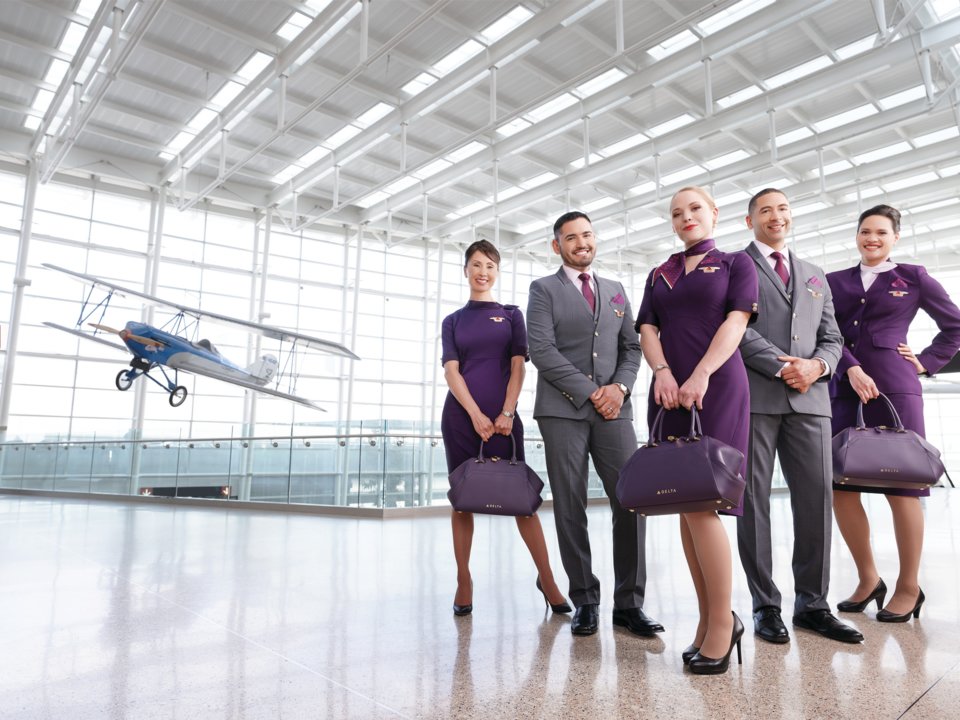My airline of choice is Delta, the best airline in the world, (or at least that flies out of my home city), and because of my loyalty to Delta I read with interest a recent piece on Business Insider, 'Delta's 64,000 employees now have new designer uniforms', covering the news that soon Delta's uniformed employees would soon be wearing a new set of uniforms designed by Zac Posen. See below for a pic of the new duds:

They look pretty sharp, right?
Seeing the pics of the new Delta uniforms got me to thinking about workplace 'uniforms' more broadly - not necessarily for airline staff or retail workers or any kind of business that actually has an official uniform - but rather the kinds of uniforms or perhaps more accurately, how standards of dress come to be adopted in workplaces and industries where people have a wide set of options about how they dress in the workplace.
And by that, I'm not talking about 'dress codes', that fun HR topic from the 90s, but rather the more subtle, cultural drivers that lead people to dress in certain ways, what 'looks' are accepted and which are not, and how adaptive and flexible workplaces are to fashion trends and evolution. Thinking about this quickly, (and with the caveat that when I'm not on the road, I work from home, so NBA t-shirts are the 'dress code' most days for me, and that I am largely considering this from a male POV), I think what, how, and when people make certain choices about workplace uniforms break down into the following categories:
We all wear the same five things- Doesn't matter if your workplace is business, business casual, or casual - everyone's work wardrobes revolve around tiny variations of the same five pieces. If it is business, think gray and navy suits, white or blue shirts, brown shoes, etc. If it is business casual, everyone wears the same khakis, gingham or polo shirts, blue blazer if things are a touch more dressy, and brown/tan loafers. Think what an accounting convention looks like - a sea of middle aged dudes in blue jackets and tan or gray pants. Finally, if the office is totally casual - jeans, t-shirts, and hoodies. Stan Smiths or if you are a flush tech company - Yeezys.
There's a little bit of experimentation, but it helps if the boss signals approval- this kind of workplace is almost the same as the above, but where it differs is how/when new trends are adopted and embraced into the uniforms. A great current example of this is the new'ish trend in men's sneaker fashion - the recent increase in higher-end, expensive, 'dress' sneakers as an alternative to dress shoes in business casual situations and even sometimes worn with a formal suit. The key here is do you as a cog in the machine feel emboldened to be the first person to rock a new trend like this at work, or do you need to spy the CEO wearing a pair of Lanvins before you think it is ok to wear your new pair of Greats to the office?
Role-based uniforms- pretty straightforward and pretty common. Sales dresses a certain way (what they think will impress prospects), Execs wear nicer, more expensive versions of what Sales wears, back-office staff more or less follows the rules above, and 'technical' folks are left to their own devices - since no one wants to dare offend their delicate sensibilities by trying to place any guidelines or expectations on them.
Pretend Steve Jobs- this is more of an individual choice rather than a workplace norm, but it is worth mentioning because some high-powered types like Steve Jobs, Mark Zuckerberg, and Barack Obama became associated with the idea of wearing exactly, or almost the same clothes every single day, as a way to lessen 'decision fatigue.' If you rock the same dad jeans, black turtleneck, and New Balances every day, the thinking goes, you have more mental bandwith for the important things at work. If you have one of these kinds of guys in your workplace, be wary, chances are they are no Steve Jobs, and are just doing the turtleneck thing to make people talk about them.
No one really cares - probably only really exists in really small organizations, where entire departments consist of one person. If there is only one person in Finance, what he/she wears sets the tone for whoever comes next. And so on across the company. Nothing resembling a uniform code forms in a department until you have at least three people. You need the dynamic of two people being able to sneak off and talk about what the third person is wearing, (behind that person's back) in order for some kind of cultural direction to take form.
That's it for today, have fun out there in your uniform of choice.
Note: My pal KD over at the HR Capitalist has promised me an in-depth look at one of the new trends I mentioned above, the 'dress' sneaker, so be on the look out for that.